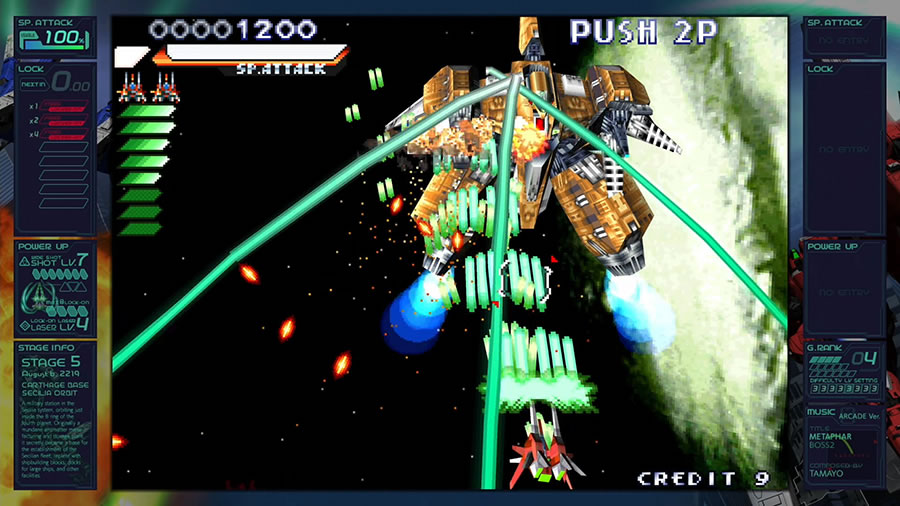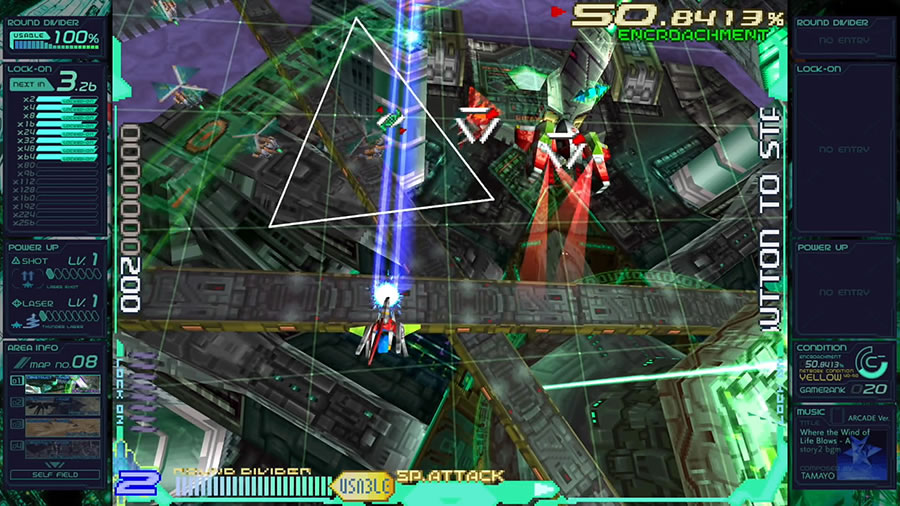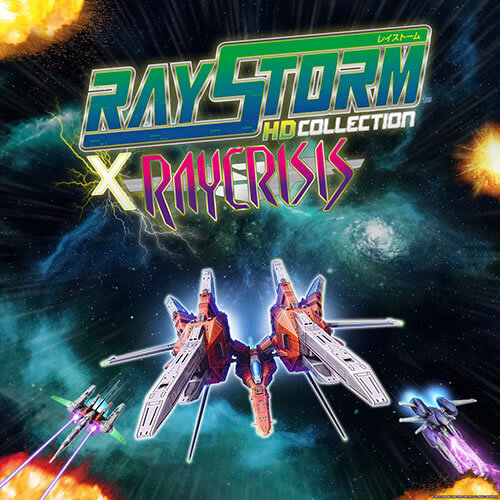- CLASSIC MAGAZINES
- REVIEW CREW
A show recapping what critics thought back
when classic games first came out! - NEXT GENERATION'S BEST & WORST
From the worst 1-star reviews to the best
5-stars can offer, this is Next Generation! - NINTENDO POWER (ARCHIVE)
Experience a variety of shows looking at the
often baffling history of Nintendo Power! - MAGAZINE RETROSPECTIVE
We're looking at the absolutely true history of
some of the most iconic game magazines ever! - SUPER PLAY'S TOP 600
The longest and most ambitious Super NES
countdown on the internet! - THEY SAID WHAT?
Debunking predictions and gossip found
in classic video game magazines! - NEXT GENERATION UNCOVERED
Cyril is back in this spin-off series, featuring the
cover critic review the art of Next Generation! - HARDCORE GAMER MAGAZING (PDF ISSUES)
Download all 36 issues of Hardcore Gamer
Magazine and relive the fun in PDF form!
- REVIEW CREW
- ELECTRONIC GAMING MONTHLY
- ELECTRONIC GAMING MONTHLY RANKS
From Mario to Sonic to Street Fighter, EGM
ranks classic game franchises and consoles! - ELECTRONIC GAMING MONTHLY BEST & WORST
Counting down EGM’s best and worst reviews
going year by year, from 1989 – 2009! - ELECTRONIC GAMING BEST & WORST AWARDS
11-part video series chronicling the ups and
downs of EGM’s Best & Worst Awards!
- ELECTRONIC GAMING MONTHLY RANKS
- GAME HISTORY
- GAME OVER: STORY BREAKDOWNS
Long-running series breaking down game
stories and analyzing their endings! - A BRIEF HISTORY OF GAMING w/ [NAME HERE]
Real history presented in a fun and pithy
format from a variety of game historians! - THE BLACK SHEEP
A series looking back at the black sheep
entries in popular game franchises! - INSTANT EXPERT
Everything you could possibly want to know
about a wide variety of gaming topics! - FREEZE FRAME
When something familiar happens in the games
industry, we're there to take a picture! - I'VE GOT YOUR NUMBER
Learn real video game history through a series
of number-themed episodes, starting at zero! - GREAT MOMENTS IN BAD ACTING
A joyous celebration of some of gaming's
absolute worst voice acting!
- GAME OVER: STORY BREAKDOWNS
- POPULAR SHOWS
- DG NEWS w/ LORNE RISELEY
Newsman Lorne Riseley hosts a regular
series looking at the hottest gaming news! - REVIEW REWIND
Cyril replays a game he reviewed 10+ years
ago to see if he got it right or wrong! - ON-RUNNING FEUDS
Defunct Games' longest-running show, with
editorials, observations and other fun oddities! - DEFUNCT GAMES QUIZ (ARCHIVE)
From online quizzes to game shows, we're
putting your video game knowledge to the test!- QUIZ: ONLINE PASS
Take a weekly quiz to see how well you know
the news and current gaming events! - QUIZ: KNOW THE GAME
One-on-one quiz show where contestants
find out if they actually know classic games! - QUIZ: THE LEADERBOARD
Can you guess the game based on the classic
review? Find out with The Leaderboard!
- QUIZ: ONLINE PASS
- DEFUNCT GAMES VS.
Cyril and the Defunct Games staff isn't afraid
to choose their favorite games and more! - CYRIL READS WORLDS OF POWER
Defunct Games recreates classic game
novelizations through the audio book format!
- DG NEWS w/ LORNE RISELEY
- COMEDY
- GAME EXPECTANCY
How long will your favorite hero live? We crunch
the numbers in this series about dying! - VIDEO GAME ADVICE
Famous game characters answer real personal
advice questions with a humorous slant! - FAKE GAMES: GUERILLA SCRAPBOOK
A long-running series about fake games and
the people who love them (covers included)! - WORST GAME EVER
A contest that attempts to create the worst
video game ever made, complete with covers! - LEVEL 1 STORIES
Literature based on the first stages of some
of your favorite classic video games! - THE COVER CRITIC
One of Defunct Games' earliest shows, Cover
Critic digs up some of the worst box art ever! - COMMERCIAL BREAK
Take a trip through some of the best and
worst video game advertisements of all time! - COMIC BOOK MODS
You've never seen comics like this before.
A curious mix of rewritten video game comics!
- GAME EXPECTANCY
- SERIES ARCHIVE
- NINTENDO SWITCH ONLINE ARCHIVE
A regularly-updated list of every Nintendo
Switch Online release, plus links to review! - PLAYSTATION PLUS CLASSIC ARCHIVE
A comprehensive list of every PlayStation
Plus classic release, including links! - RETRO-BIT PUBLISHING ARCHIVE
A regularly-updated list of every Retro-Bit
game released! - REVIEW MARATHONS w/ ADAM WALLACE
Join critic Adam Wallace as he takes us on a
classic review marathon with different themes!- DEFUNCT GAMES GOLF CLUB
Adam Wallace takes to the links to slice his way
through 72 classic golf game reviews! - 007 IN PIXELS
Adam Wallace takes on the world's greatest spy
as he reviews 15 weeks of James Bond games! - A SALUTE TO VAMPIRES
Adam Wallace is sinking his teeth into a series
covering Castlevania, BloodRayne and more! - CAPCOM'S CURSE
Adam Wallace is celebrating 13 days of Halloween
with a line-up of Capcom's scariest games! - THE FALL OF SUPERMAN
Adam Wallace is a man of steel for playing
some of the absolute worst Superman games! - THE 31 GAMES OF HALLOWEEN
Adam Wallace spends every day of October afraid
as he reviews some of the scariest games ever! - 12 WEEKS OF STAR TREK
Adam Wallace boldly goes where no critic has
gone before in this Star Trek marathon!
- DEFUNCT GAMES GOLF CLUB
- DAYS OF CHRISTMAS (ARCHIVE)
Annual holiday series with themed-episodes
that date all the way back to 2001!- 2015: 30 Ridiculous Retro Rumors
- 2014: 29 Magazines of Christmas
- 2013: 29 Questionable Power-Ups of Christmas
- 2012: 34 Theme Songs of Christmas
- 2011: 32 Game Endings of Christmas
- 2010: 31 Bonus Levels of Christmas
- 2009: 30 Genres of Christmas
- 2008: 29 Controls of Christmas
- 2007: 34 Cliches of Christmas
- 2006: 33 Consoles of Christmas
- 2005: 32 Articles of Christmas
- 2004: 31 Websites of Christmas
- 2003: 29 Issues of Christmas
- 2002: 28 Years of Christmas
- 2001: 33 Days of Christmas
- NINTENDO SWITCH ONLINE ARCHIVE
- REVIEW ARCHIVE
- FULL ARCHIVE
RayStorm X RayCrisis HD Collection
From popularizing the shoot ‘em up genre with Space Invaders to linking a bunch of monitors together to create a super-wide display with Darius II, Taito is one of those companies constantly pushing the technological boundaries to create unforgettable action games. This was definitely true in the mid-1990s, when the shooter genre started to break free of their 2D confines and dabble in 3D worlds created out of polygons. Two of my favorite games of that era were RayStorm and RayCrisis, two classic shoot ‘em ups that have been packaged together in a brand-new HD collection from ININ Games. Is this a must-have for genre fans, or just another over-priced compilation from Taito? That’s what we’re about to find out in this review of RayStorm X RayCrisis HD Collection.
Before the storm or the crisis, there was RayForce, a vertical shooter from 1994 that confusingly also went by the names Layer Section and Galactic Attack. While it’s a fairly traditional shoot ‘em up with a cool lock-on system and detailed pixel graphics, you can see the developers wanting to push that technology as far as it can go, with inventive level designs that employ a lot of cool 3D effects. Perhaps that’s why it wasn’t a surprise to see the 1996 follow-up, RayStorm, dive head-first into a completely polygonal 3D world.
RayStorm takes everything that was great about RayForce and gives it a new, cinematic quality that remains surprisingly effective a quarter-century later. It’s the distant future and, once again, humanity is under the threat of being wiped out by a being known as Con-Human, a computer for planetary management that has evolved into a sentient machine. We’ve already survived one wave of attack, but defeating them a second time may come with a catastrophic price – the destruction of the Earth.
Much like RayForce, this sequel is also a top-down vertical shooter with multiple layers of fast-paced action. Our experimental ship comes equipped with not only a standard gun for taking out enemies in the air, but also a laser that will blow up the ground units below. What sets this apart from Xevious is that we’re able to lock on to a bunch of enemies at the same time, which will both clear out the battlefield in a hurry and give players a nice score multiplier. There’s also a super-powerful mega-bomb you can deploy when it’s charged up, but most of the gameplay involves the playful dance between shooting your guns and locking on with the laser beams.
What makes this game so great is that the levels are specifically designed to force you to use both types of attacks at the same time. We’ve flown over the ocean in plenty of shoot ‘em ups, but this one requires you to look at what’s in the water and attack before they get you. And thanks to the use of 3D polygons, it’s common to see an enemy start on the ground and then fly into the air, forcing you to take them on in a brand-new way. The eight stages and their mech bosses are all designed to take full advantage of the layer gimmick, and I love every bit of it.
The same is true in the 1998 sequel, RayCrisis, which is actually a prequel to the events of the previous game. Although it’s set in a cyberspace environment, the level designs remain the same. We are once again treated to speedy stages that whip around the environment and really show off the 3D effect, while asking us to simultaneously take out Con-Human mechs using both bullets and lock-on lasers. While technically a prequel, this is a game that definitely plays by the sequel rule of making everything bigger and more explosive. We can target more enemies at once and the levels are bigger and more detailed than ever before, and don’t even get me started on the new boss designs.
One of the big changes to RayCrisis is in the way it dolls out levels. Instead of taking you on a linear path through all of the levels, the game will select a few for you to play in a row, adding some much-needed replay value. There are also multiple endings that will depend on how good you are at the game. Other changes include the way the super, mega, ultra powerful weapon works, as well as some important scoring tweaks.
Of the two games, RayCrisis is substantially easier than RayStorm, though I prefer the sequel to the prequel. Even with the graphical boost, I preferred the level designs in RayStorm and found myself constantly going back to it. The stages in RayCrisis are shorter and not as interesting, and the random nature of it means that you could get a few lame stages in a row. That said, I found RayStorm to be a lot more challenging, so I could see a lot of people far preferring the final game in the trilogy.
When it comes down to these shooters, I don’t have a lot of complaints. These are two great games from the mid-1990s, and they definitely come with the pros and cons of shooters from that time period. From the gobbledygook stories to the predictable action, these games check off all of the shoot ‘em up cliches. There are also some issues related to the layered gameplay and 3D visuals, such as not always knowing if you’re supposed to shoot at an enemy or blast them with the targeted laser beam. For the most part, these problems aren’t going to get in the way of having fun, especially if you’re the type of shoot ‘em up fan who is interested in this type of compilation.
As a package, RayStorm X RayCrisis HD Collection is ... fine. This is another one of those barebones releases from Taito, but at least it allows you to switch between the original versions of the game and the HD remasters. This is a cool addition that really shows the difference between then and now. I would say that RayStorm benefits more from the HD upgrade than RayCrisis, but there are sections of both games that look a little rough.
While lacking in the extras department, I was impressed with the options menu. We’re able to customize a lot of the normal things (such as adjusting the scanlines and remapping the controller), as well as tinker with things you might not have even thought of (like changing the difficulty of individual levels). We also get a bunch of screen options, including different backgrounds. We get a surprising amount of control with these two games.
For me, the big disappointment is the lack of RayForce. It’s great having these two games packaged together, but why not complete the trilogy by including the game that started it all. It may not be 3D, but that’s no reason to keep it out of the package. At $40, this game needs as much content as it can get, so it’s extremely disappointing to see it left out. It’s also a shame that this package doesn’t give us more historical context or images of the cabinets. These two boundary-pushing shooters deserve something better than a barebones compilation.
HOME |
CONTACT |
NOW HIRING |
WHAT IS DEFUNCT GAMES? |
NINTENDO SWITCH ONLINE |
RETRO-BIT PUBLISHING
Retro-Bit |
Switch Planet |
The Halcyon Show |
Same Name, Different Game |
Dragnix |
Press the Buttons
Game Zone Online | Hardcore Gamer | The Dreamcast Junkyard | Video Game Blogger
Dr Strife | Games For Lunch | Mondo Cool Cast | Boxed Pixels | Sega CD Universe | Gaming Trend
Game Zone Online | Hardcore Gamer | The Dreamcast Junkyard | Video Game Blogger
Dr Strife | Games For Lunch | Mondo Cool Cast | Boxed Pixels | Sega CD Universe | Gaming Trend
Copyright © 2001-2025 Defunct Games
All rights reserved. All trademarks are properties of their respective owners.
All rights reserved. All trademarks are properties of their respective owners.





































